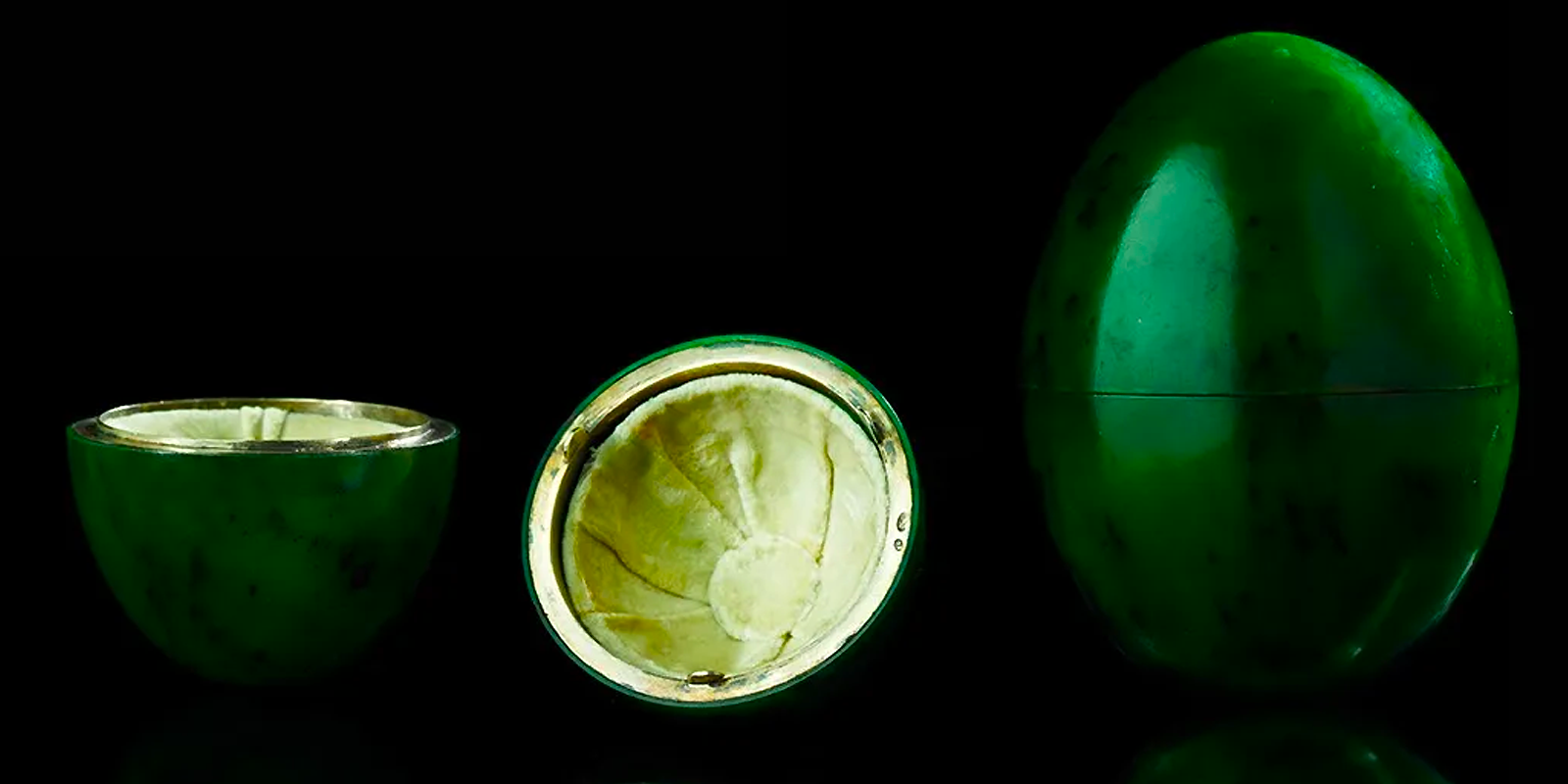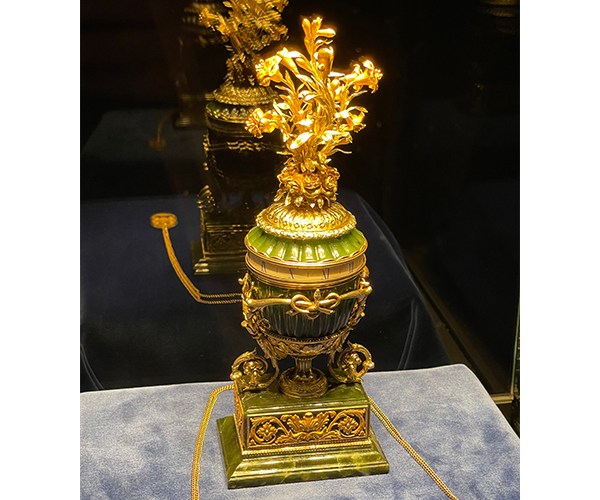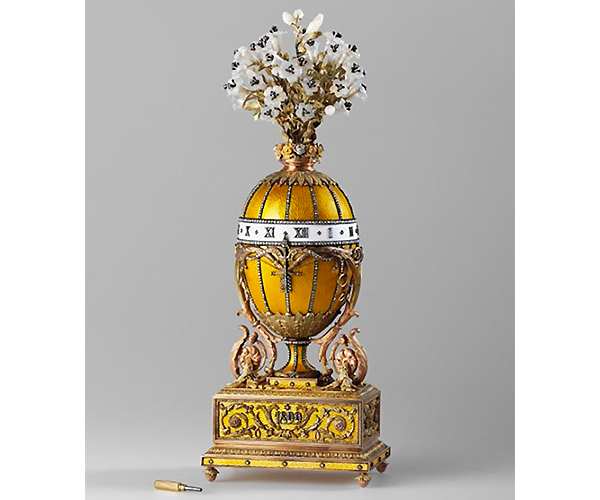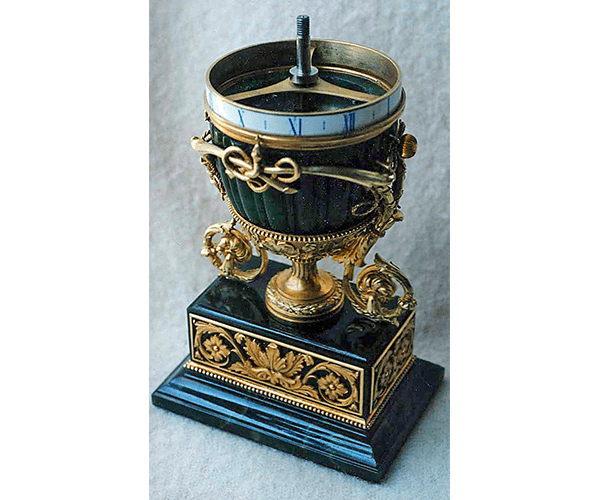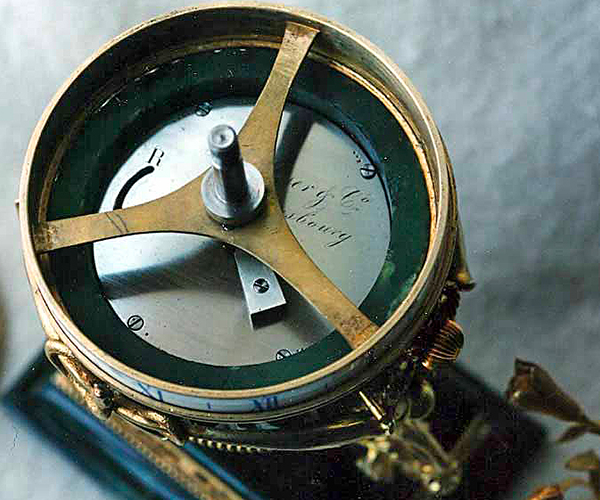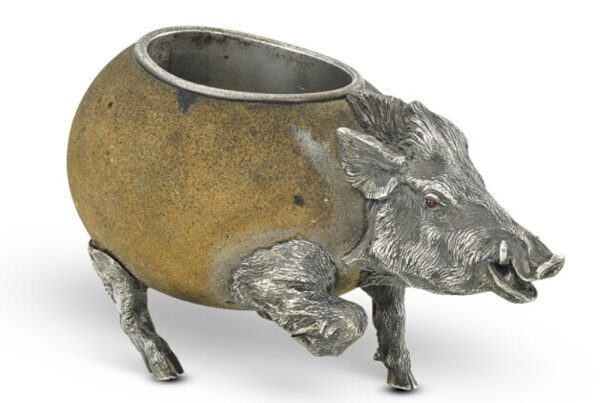I hadn’t planned a trip to GEM-GENEVE, as the Geneva Gem Show is wittily called – but when I heard that the so-called ‘Igor Carl Fabergé Foundation’ had a booth there I became so curious that I jumped on the next plane out. I needed a chuckle and a boost of combative energy. I hate forgers and perpetrators of their production, which pollutes markets and robs the naïve.
The show ran November 3-6 at the faceless Palexpo exhibition centre near Geneva Airport, and featured a whacking 170 participants. There was also a talkshop, where orators included Paris dealer Olivier Bachet pontificating about The Influence Of Fabergé On His Contemporaries.
Olly declares himself spécialisé dans le travail de la Maison Cartier (I’m quoting from an interview he accorded Le Gemmologue website last June) – but Fabergé isn’t Cartier, even if Olivier is one of the Igor Carl Fabergé Foundation’s official ‘Experts’ (whatever that means). Who appointed them? His fellow ‘Experts’ include fashion designer Tatyana Parfionova, Valentin Skurlov, Michel Kamidian and Foundation President Bernard Ivaldi. Their duties include ‘authenticating items attributed to Carl Fabergé.’
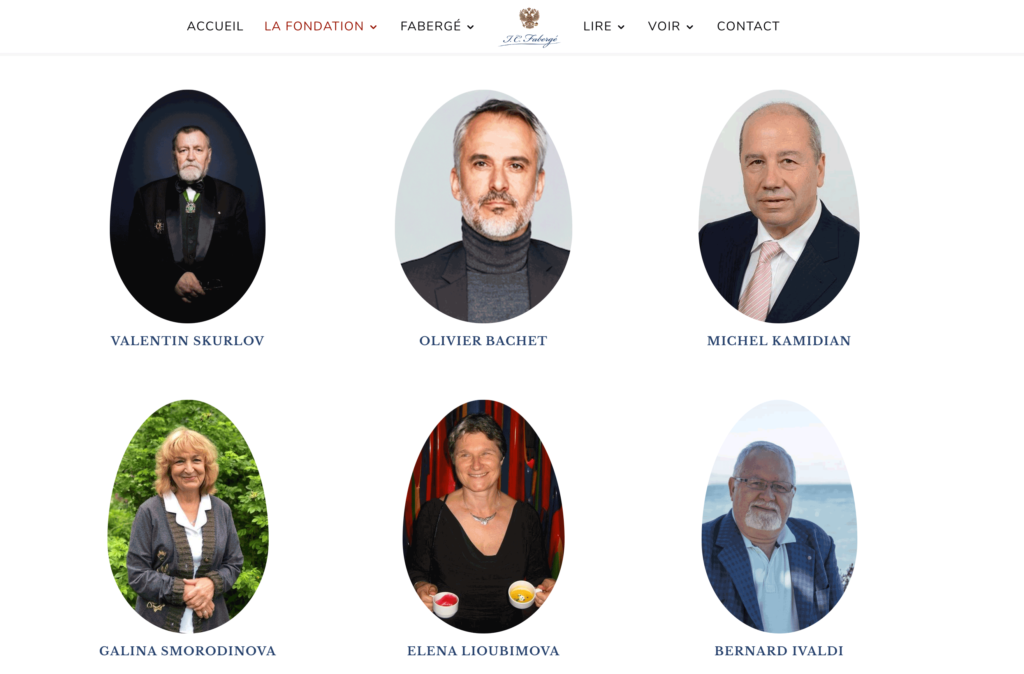
Igor Carl Fabergé Foundation Experts
Sadly, I missed Olly’s talk. Instead I made straight for the dark, poorly lit Igor Carl Fabergé Foundation (ICFF) booth, which was hosting an exhibition extravagantly styled Fabulous Carl Fabergé. What I saw rather surprised me: half of the stand consisted of glass vitrines packed with legitimate (albeit pretty average) pieces by Fabergé, Cartier and other makers. Given the ICCF’s track record – remember the so-called ‘Wiazemsky Collection’ with its fake Fabergé eggs that ICFF were shamelessly peddling a couple of years ago? – I had expected a bevy of hideous forgeries, with certificates signed by Valentin Skurlov and the late-and-great Tatiana Fabergé. This time, however, there was nothing of the kind. Did this spell a change in approach?
Not quite. The other half of the stand was devoted to three items with purported imperial provenance.
One of these beauties, known as the ‘Bouquet of Yellow Lilies clock-egg’, was part of a 2008 trial in London (see www.ruzhnikov.com/a-faberge-farrago-of-fakes-and-impostors). It first came to public attention on 21 November 1991 when, described as ‘an urn-shaped timepiece with a horizontal dial,’ it was offered by Sotheby’s Geneva, who claimed (without a scrap of evidence) that it had been ‘retailed by Fabergé’ and gifted ‘early in 1892’ by Dowager Empress Maria Feodorovna to Dr Johann Georg Mezger.
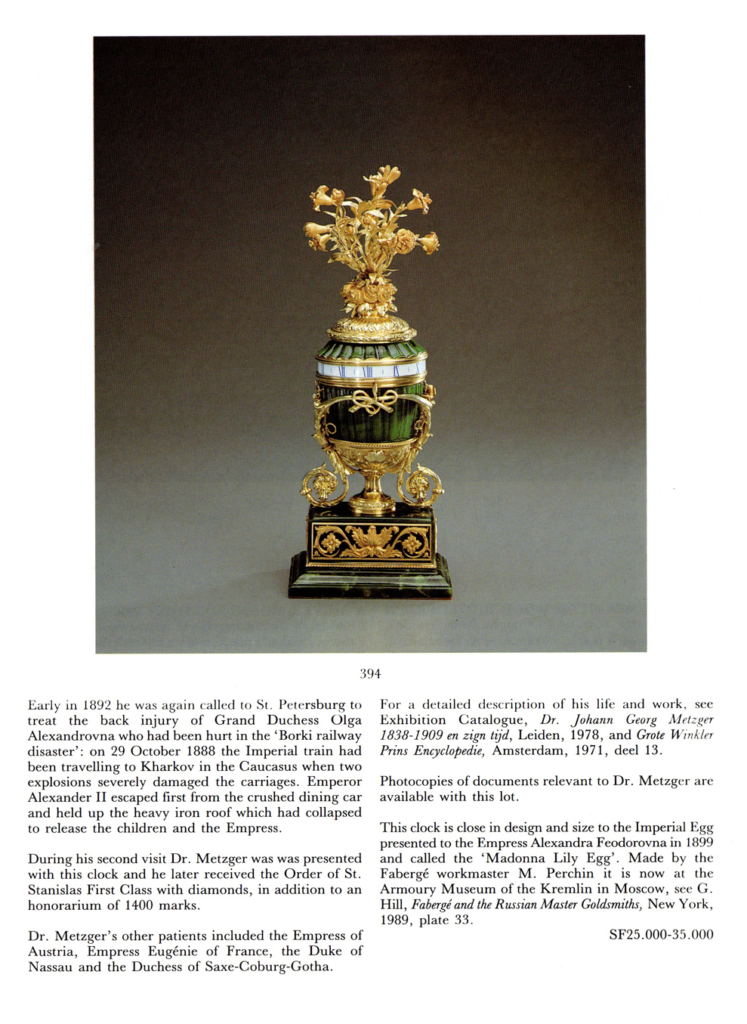
Sale Catalogue of Sotheby’s Geneva, November 1991
The timepiece came in a perfectly legitimate Fabergé case, but was missing the velvet fitting where the ‘clock-egg’ should have been snugly cradled, and – as Sotheby’s omitted to say – had obviously been intended for something else.
Sotheby’s also claimed this ‘clock-egg’ or ‘urn-shaped timepiece’ was ‘close in design’ to Fabergé’s Madonna Lily Egg of 1899. Pure promotional blather! A paltry CHF25,000-35,000 estimate showed what Sotheby’s thought about the item’s supposed Fabergé connexions. In the event it was acquired for CHF148,500 by Michel Kamidian, apparently in association with one or more colleagues.
- Bouquet of Yellow Lilies clock
- Fabergé’s Madonna Lily Egg
In 1992 Kamidian helped organize The Fabulous Epoch of Fabergé exhibition (he and his ICFF chums just love that word ‘fabulous’) near St Petersburg, asserting that his urn-shaped timepiece was an authentic Fabergé Egg, and reproducing it on the catalogue cover. In 1995 Kamidian conveniently found a scratched inventory-number on it, which had somehow escaped Sotheby’s (and his own) eagle eyes four years earlier. Valentin Skurlov dated the inventory to Autumn 1893.
In 1999 Kamidian showed me this ‘clock-egg’ at my hotel-room in Paris, hoping I’d give it the Fabergé thumbs-up. Fat chance. I held it in my hands, took it apart, examined it from top to bottom with a magnifying glass, and took the photos shown below. If there were any hallmarks, I’d have seen them. It obviously wasn’t Russian, but some late 19th century European production.
- Bouquet of Yellow Lilies clock, photo taken in 1999
- Bouquet of Yellow Lilies clock, photo taken in 1999
In September 2000 Kamidian entered his ‘clock-egg’ in Fabergé: Imperial Craftsman and His World, a glitzy show in Delaware curated by Geza von Habsburg and Alexander von Solodkoff. Neither was convinced it was by Fabergé, but they agreed to have it labelled as such when Kamidian assured them that Skurlov had found the original Fabergé invoice in the Imperial Archives, detailing the clock’s acquisition by Tsar Alexander III. No he hadn’t! The invoice actually referred to a different, Louis XV not Louis XVI-style clock. One Louis-Schmui is worth another, I guess… what’s the difference to your average forger? All they want to do is to fob the thing off on some unsuspecting victim.
The ‘clock-egg’ was shipped to the States from London, with Kamidian declaring its insurance value as $2.5 million. When it allegedly suffered damage in transit (to a bud and two branches), the insurers were initially prepared to refund 5% of its supposed value ($125,000) – but baulked after expert examination concluded the damage had occurred at the site of earlier repairs. Kamidian disputed this, and took the shippers and exhibition organizers to court. Stupid is as stupid does: as if $125,000 weren’t enough, Kamidian decided go for the jugular!
Miraculously, shortly before the hearing in the London High Court, a hallmark and assay mark were discovered on the ‘clock-egg’ by a ‘friend of Mr Kamidian’s’ and attributed to Fabergé by ‘Kamidian’s expert witness’… none other than Valentin Skurlov, that prolific purveyor of meaningless certificates, whose expertise and veracity have more than once been questioned. The marks had remained unnoticed for sixteen years, declared Skurlov, because they were ‘extremely small and barely visible to the naked eye.’
Most Fabergé pieces – however small – have hallmarks. Larger pieces, like this ‘clock-egg,’ had plenty of room for a standard Fabergé hallmark (plus the assay mark and his workmaster’s initials).
Judge Stephen Tomlinson declared Skurlov’s evidence ‘muddled and unconvincing’ and expressed ‘uncomfortable doubts as to his objectivity’ (now that Christie’s Russian Department has closed, I wonder if Skurlov has removed the name Christie’s from his letterhead? I somehow doubt it).
The Judge was equally scathing about Mr Kamidian, whose evidence he found ‘inconsistent, contradictory, confusing and unsatisfactory.’ The Judge was unable to ascertain whether Kamidian ‘actually owned the clock,’ and dismissed his conduct as ‘not consistent with a bona fide belief that the egg was by Fabergé – but rather with a belief that he might persuade a purchaser that it was.’
In the Judge’s opinion the ‘clock-egg’ was not a genuine Fabergé at all – and worth at most £100,000. He told the exhibition organizers to pay £1,000 for one small repair, dismissed all other claims, and ordered Kamidian to pay costs (which, for a three-week trial at the London High Court, may have run into seven figures).
In December 2011 this Kamidian bauble was offered by court-order at a small London auction house called Roseberys in West Norwood (needless to say, neither Sotheby’s nor Christie’s would touch the thing with a barge-pole). Had it been a real Fabergé lots of people – starting with me – would have been gunning for it, and it would have commanded a vast price. Instead it fetched £75,000 – pretty much what Judge Tomlinson had predicted, and a far cry from Kamidian’s dream of mega-millions.
Even so, a two-page spread, extolling the Mezger timepiece as A Genuine Artefact Labelled a Fake, appeared in a meaty tome published in 2012 entitled Fabergé: A Comprehensive Reference Book. Its authors? Valentine Skurlov and Tatiana Fabergé.
I hear from the grapevine that the indomitable Kamidian is now asking 30 million for his clock – not sure what currency but, in today’s world, it hardly matters. Even in roubles that would be way too much!
I was hoping to ascertain the precise figure from Mr Kamidian at GEM-GENEVE, but he slithered away into the murky recesses of the hall as soon as he spotted me walking around the ICFF stand.
*
The other two ‘imperial’ items on the stand were described by ICFF President Bernard Ivaldi as ‘previously unidentified imperial eggs,’ in his preface to the flimsy, amateurishly designed Fabulous Carl Fabergé exhibition brochure, in A5 format (21 x 14.8cm) on cheap paper, illustrated with tiny 3 x 3.5cm photos of some of the items on display. Who was the alert expert who ‘identified’ these things? A name and credentials would have been good to have – plus details of whatever publications he or she have to their credit.
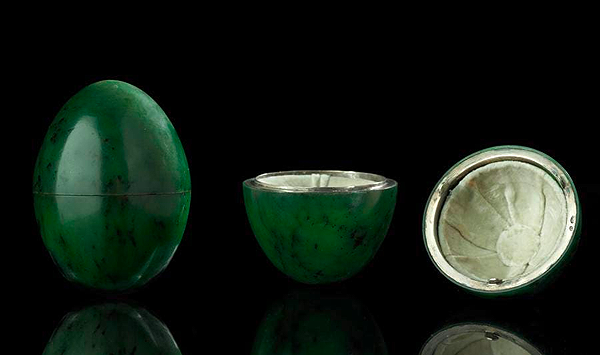
So-called “Grand Duchess Egg” according to Igor Carl Fabergé Foundation
The first of the two ‘imperial items’ was a primitive nephrite egg with a plain silver rim. Does it look like a Fabergé work? – The hell it does! Peter Carl Fabergé – as opposed to Igor Carl Fabergé, a dressmaker who died in 1982 – was renowned for innovative design, intricate work and meticulous craftsmanship. This egg has none of that. It’s just a chunk of polished nephrite. Yet it is described in the ICCF’s Fabulous Carl Fabergé brochure as the ‘Grand Duchess Egg’ from 1904, accompanied by reams of hogwash claiming it was presented by Tsar Nicholas II to his wife’s elder sister, Grand Duchess Elisabeth of Hess. As always, the Igor Carl Fabergé Foundation presents no evidence whatsoever to substantiate this alluring provenance. Nada! Zilch! What sort of idiots are these clap-trap stories intended for?
The imperial story seems to have been recently concocted to justify a monster $13 million price-tag. Nothing wrong with avarice – lots of people suffer from this genetic deviation – but $13,000,000 seems to overstep any boundaries of that malaise. It’s obvious that Kamidian has forgotten the costly lessons of his 2008 trial and is aching for more scandal.
Far from being ‘undiscovered,’ this ugly ‘Grand Duchess’ nephrite egg has been in Kamidian’s hot little hands for over 20 years. When he showed it to me personally in Paris, trying to peddle it as Fabergé, I laughed it off. It had appeared at Sotheby’s London on 5 June 2001 (Lot 139, estimate £40,000-60,000). Needless to say, nobody believed in its authenticity; it failed to elicit any interest and totally flopped. Sotheby’s described it as ‘Fabergé, Moscow 1899-1908.’ I bet my bottom dollar they would now be ashamed of that description, and would like nothing more than to disassociate themselves from this gleaming lump of garbage.
*
Last of the ICFF’s three imperial surprises was a ‘strawberry red’ guilloché enamel ‘Tsarevich Egg’ supposedly dating from 1905 and ‘made in the workshops of the Imperial Stroganov School,’ embellished with gold imperial monograms.
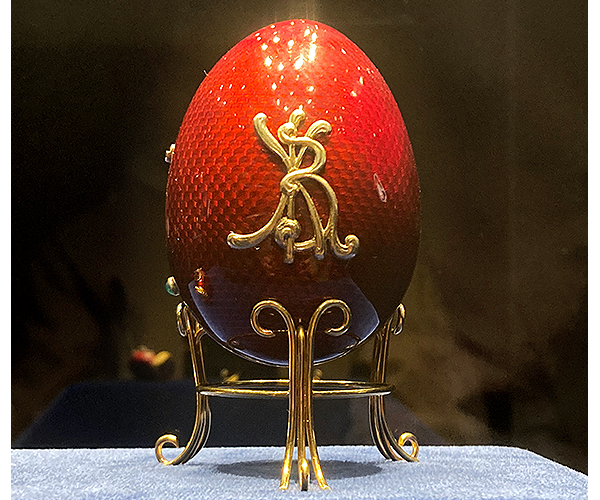
So-called “Tsarevich Egg” according to Igor Carl Fabergé Foundation
According to the ICFF brochure the piece first appeared at Sotheby’s London (Lot 112) in 1966, then re-emerged at Bonham’s London in 2009. The ICFF failed to mention, however, that it was described in the catalogue of that sale (which took place on 8 June 2009) as a ‘gold scent-bottle by Fabergé’ with ‘marks for workmaster Michael Perchin’ and dated ‘St Petersburg, c.1890.’ It sold for £28,800.
This scent-bottle/egg next appeared on 29 November 2016, back at Sotheby’s, where it was described as a Fabergé scent-bottle ‘in a Stroganov box’ – and again attributed to ‘workmaster Michael Perchin, St Petersburg c.1890.’ It had an estimate of £18,000-25,000, and sold for a far from imperial £45,000.
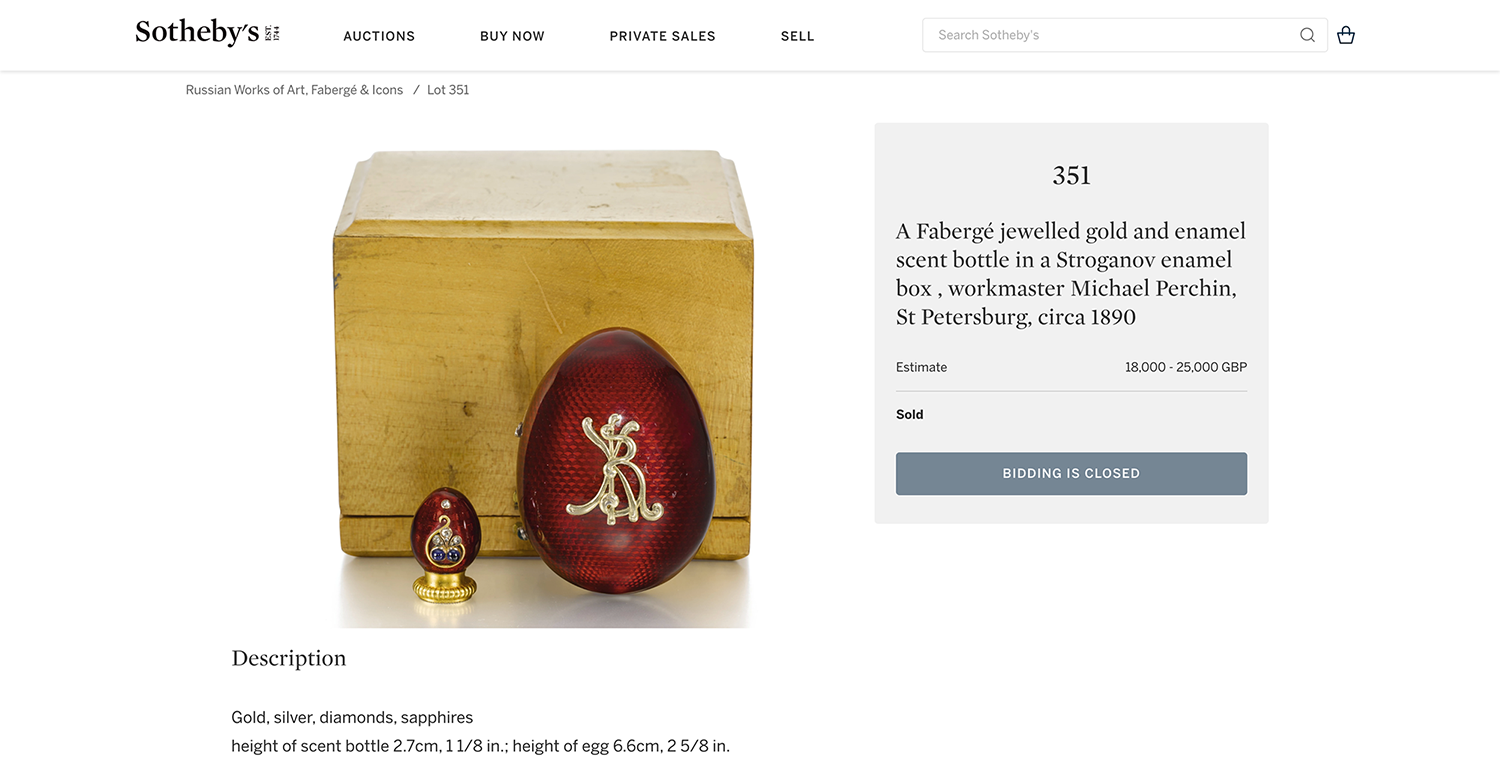
Sale: Sotheby’s London, 29 November 2016
If, as Kamidian and ICFF claim, the item is a ‘Tsarevich’ egg from 1904/05, it cannot have been made, as Sotheby’s and Bonhams both asserted, around 1890. Nor can it have made by Mikhail Perchin, who died in September 1903. The Perkhin hallmarks observed by both Sotheby’s and Bonhams appear to have vanished since the egg last appeared at auction in 2016 – Perkhin and an 1890 dateline being, of course, incompatible with the egg being made to mark the birth of Tsarevich Alexei (12 August 1904).
Curiously, the egg seems to have shrunk since it left Sotheby’s. In 2016 it was 6.6cm tall and the scent-bottle 2.7cm. Today, according to the ICFF brochure, the egg is 6.3cm tall and the scent-bottle (having morphed into a ‘seal stamp’) is down to 2.5cm.
No one has ever previously associated this worthless production with Tsarevich Alexei. No evidence has been supplied by the ICFF to substantiate that outrageous claim. The item has clearly nothing to do with Fabergé, or even Russia; guilloché enamels of this ilk were commonly produced in Austria, Germany and France.
*
Kamidian forges ahead like a bull in a china shop, covering his scrawny ass with all sorts of papers apparently created and signed by Skurlov – yet another creature of the dark. And who is this guy Ivaldi, the so-called ‘President’ of this ‘Foundation’ since 2015 – a consultant for more ‘educational institutions and multinational companies’ than I have room to list, and whose expertise appears to extend from software to pharmaceuticals.
Is Ivaldi in the dark too – bamboozled by ‘The Comedian’ all these years? I doubt it. Anybody who deals with Fabergé these days knows about the onslaught of fakes, so I can hardly believe that Good Ol’ Bernie is an innocent victim.
I’d like to think he is not an accomplice, in cahoots with Komidian. But theirs is a partnership wondrous to behold.
*
The GEM-GENEVE Press Office was keen to point out that the Igor Carl Fabergé Foundation was celebrating its 40th anniversary with a show where ‘three imperial eggs will be revealed to the world.’ PR supremo Christine Ufer also circulated the media with an enlightening interview with Foundation President Bernard Ivaldi. Excerpts:
How was your Fabulous Carl Fabergé exhibition created ?
BI: We’d been preparing an exhibition at Tsarskoye Selo for over two years.
More like two days, I reckon!
BI: But Covid, then the events we are now witnessing, stopped that egg from hatching. When GemGenève decided to host a new edition in November 2022, we wanted to take up the challenge. This type of exhibition, which normally requires more than a year’s preparation, was put together in record time.
What was challenging about throwing a bunch of stuff in a vitrine?
What is the mission of the Foundation you preside over today?
BI: The aim of the Foundation is to publicise the work and personality of Carl Fabergé and collect as much information related to his professional activities as possible. In 2012 the Foundation published what we nicknamed the ‘Magnum Opus’ or the ‘Bible’: Fabergé, A Comprehensive Reference Book – the product of over ten years of research.
Where is this book? Is it for sale? I’ve never seen it! I tried googling it and got ‘currently not available.’ It has Zero Reviews on Amazon.
BI: We are now going to publish a revised version which will include recent discoveries and articles that shed new light on the world of Fabergé. Too often published articles are simply based on, or copy, old documents and in that way continue to perpetuate untrue or wrong information. There are too many fakes and forgeries in circulation worldwide.
Too right – starting with the ICFF-endorsed Wiazemsky Collection!
Can you tell us more about the three imperial eggs you are revealing to the public at GemGenève?
BI: Due to obscure battles among experts, or commercial interests that were prioritized above historical interest and factual accuracy, the Bouquet of Yellow Lilies, published in the 2012 Magnum Opus, was not included in the catalogue raisonné published some time before. In contrast, the Elizabeth Feodorovna nephrite egg and the Tsarevich egg are recent ‘discoveries’ which had appeared in auction catalogues but never been identified as imperial eggs.
Bullshit! ‘Discoveries’ by whom? The same folks who discovered the Wiazemsky Collection ?
BI: We’d need an entire conference to provide you with more detailed information.
Great! When’s this conference going to happen? Who’s arranging it? And what does ‘detailed information’ mean? Do not forget to invite me!!!
BI: The explanations will be published in full in the next catalogue raisonné due to appear in Spring 2023.
What explanations? Where’s the PREVIOUS Catalogue Raisonné? I’d like to buy one!… Catalogues Raisonnés exist for world-famous artists likes like Monet or Renoir. They aim to include all the artist’s works. Is it possible to produce one for Fabergé? Absolutely not! First of all: thanks to the Russian Revolution, World War II and decades of neglect, Fabergé archive material is far from comprehensive. Secondly: the idea of any publication encompassing Faberge’s entire œuvre is laughable: Fabergé operated for over 30 years and produced tens of thousands of items. He had several hundred people working for him – and a host of workmasters. His eggs have been studied in detail, but the bulk of his output has not. So how on earth do you produce a Fabergé Catalogue Raisonné? You would need to list and illustrate maybe 100,000 items…that would take 20 or 30 huge volumes! The idea is laughable.
Are you yourself in charge of expert assessments?
BI: In the past I did an expert assessment for criminal proceedings in Switzerland over a forgery of a Fabergé egg.
What do you really know about Fabergé, Mr Ivaldi? Wasn’t it under your stewardship that the so-called Wiazemsky Collection was promoted, with its five fake eggs? Why didn’t you do an ‘expert assessment’ of that before posting it online? I seem to remember that, when I pointed out that the so called Wiazemsky Collection was full of forgeries, it was swiftly removed from your website….
BI: I have answered numerous inquiries from people thinking they have Fabergé objects, producing expert assessments is just too serious to be left to the opinion of just one person.
What exactly are your credentials as a Fabergé expert, Mr Ivaldi? Have you written any books? I’ve never seen you at Russian Week in London.
BI: The Foundation is supported by its Committee of Experts and by a network of international specialists (researchers and experts) with the highest ethical standards.
Who are these specialists? Can we have their names, please? Is Mr Komedian among them?
Alexandra Blin-Kourbatoff, Vice-President of the Foundation, is presented as a descendent of the Fabergé family. What is her link to Carl Fabergé?
BI: The sons of Agathon Fabergé were first cousins of Alexandra’s grandmother. Alexandra spent a lot of time with the late Tatiana Fabergé, who had an immeasurable place in her life and her heart.
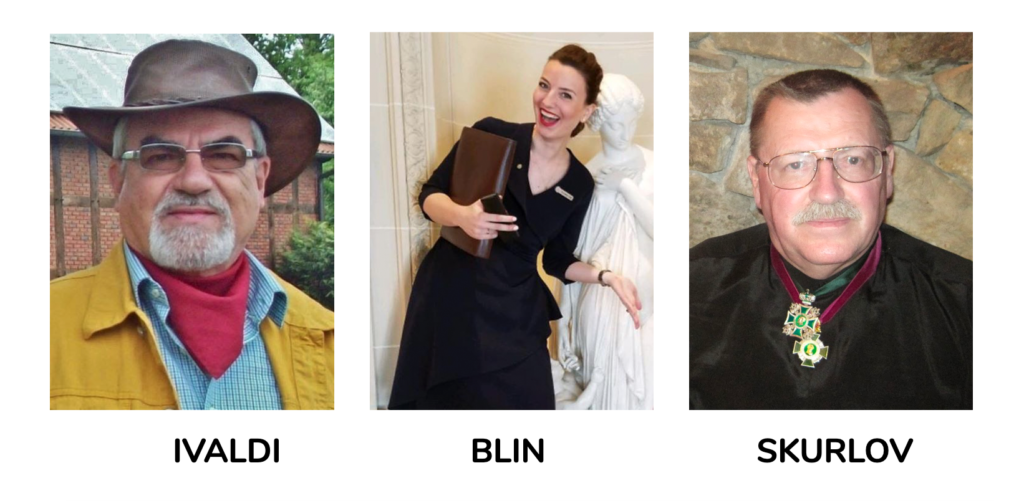
That hardly makes her an expert! And the fact that her maternal (great) grandfather was called Vladimir Kourbatoff hardly qualifies her to use that name, either – except to sound more Russian, and therefore (if we subscribe to the specious logic of Mr Ivaldi) more of an ‘expert’! Such as expert, in fact, that Miss Blini replaced the late Tatiana Fabergé as Vice-President of Mr Ivaldi’s Foundation… having endorsed the authenticity of the ‘Wiazemsky Collection.’ Blini used to work as ‘Guest Relations Supervisor’ (i.e. Head of Reception) at the Four Seasons Hotel in Geneva, having previously marketing jeans in provincial France. She is now an estate agent with Schmidhauser & Bordier in Geneva – whose website refers to her as plain ‘Alexandra Blin.’

